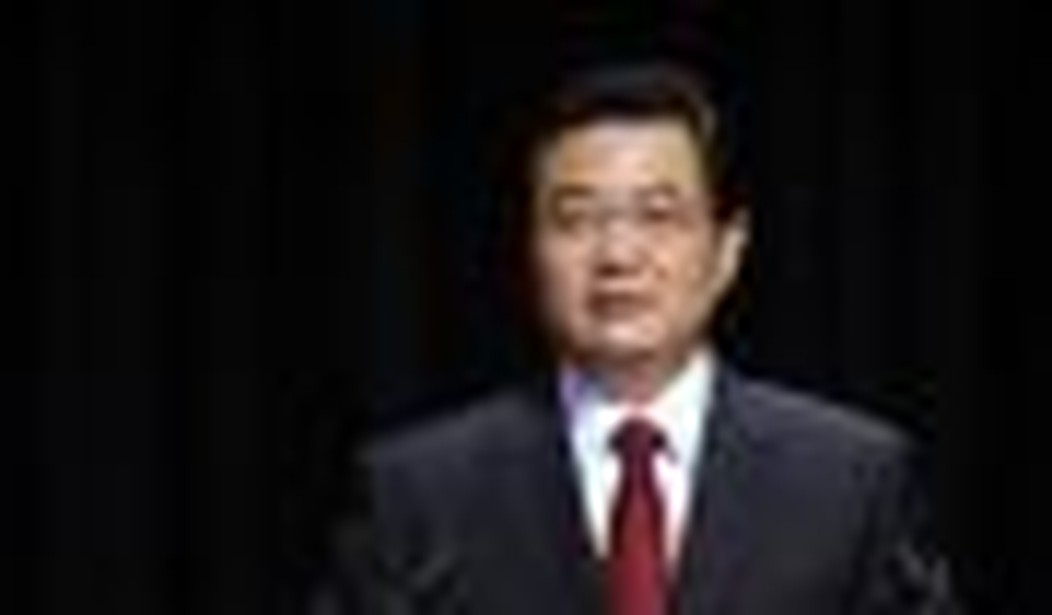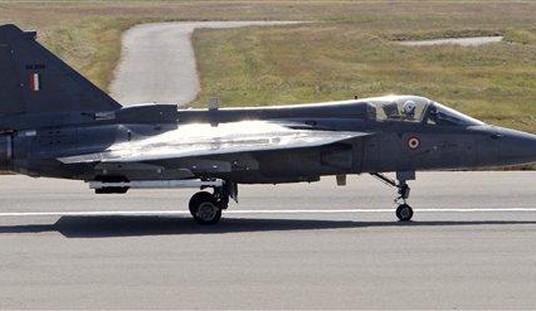Expectations are low for the state visit by Chinese President Hu Jintao to Washington this week. The issues that divide the two powers are well known, from Iran and North Korea, through a menacing military buildup, to trade rivalry and technology theft. They have been thoroughly discussed in a wide variety of venues without resolution.
The Obama administration held its second meeting of the U.S.-China Strategic and Economic Dialogue in May. President Barack Obama talked with Hu on the sidelines of the G20 summit in November. The U.S.-China Joint Commission on Commerce and Trade met in December. Cabinet secretaries and senior American officials make regular trips to China, with Defense Secretary Robert Gates and Commerce Secretary Gary Locke visiting Beijing and Shanghai, respectively, last week. Not only have the topics of these meetings not changed in the last year, they have not changed in the last decade.
The Beijing regime, and those in the American establishment who support an appeasement policy toward it, are promoting the virtue of “patience.” Henry Kissinger, writing last Friday in the Washington Post, argued:
America has found most problems it recognized as soluble. China, in its history of millennia, came to believe that few problems have ultimate solutions. America has a problem-solving approach; China is comfortable managing contradictions without assuming they are resolvable.
His advice was to accept the Chinese view to avoid a new Cold War. It should be noted that as secretary of State during the old Cold War, Kissinger also thought of the conflict as a situation to be managed rather than resolved (won), as the U.S. was supposedly in decline then too.
“While America pursues pragmatic policies, China tends to view these policies as part of a general design … an overall strategy to hold China down,” writes Kissinger, who has made a personal fortune helping Western corporations contribute to Beijing’s rise through investment in Chinese science and industry. Yet, having started his career as a diplomatic historian, he must know that his hope for China “subordinating national aspirations to a vision of a global order” is too far fetched to serve as the basis for a realistic policy.
Two days later, an editorial in the Chinese Communist Party newspaper Global Times echoed Kissinger’s sentiments, but with a significant twist about who is showing patience:
The world is always suspicious of the patience between China and US in dealing with questions of concern. Hu’s visit will showcase this patience to the people. History proves that overreaction and paranoia will only deteriorate a situation. The transition from a unipolar to a multipolar world has shocked the US in recent years, and its media have combined an existing bias with new paranoia.
China has called its rise “peaceful” so as not to alarm America while it still had the power to easily thwart Beijing’s ambitions. But the aim has always been to overthrow U.S. “hegemony” and create a “multipolar” world of equal powers; at least until China’s continued growth make it first among equals in the 21st century, as had been the U.S. position in the 20th century.
The editorial cited the U.S. “media” and “certain citizens” as factions trying to stir up trouble. The ruling party’s advice to America was that issues such as “the value of the yuan, protection of intellectual property rights and military transparency in China” are merely “odd speculations and questions that both powers would do well to shrug off.”
Kissinger is not the only member of the old foreign policy establishment dismissive of those who do not want to shrug off China’s expanding capabilities. Consider Leslie Gelb, president emeritus of the Council on Foreign Relations, who served in the Johnson and Clinton administrations. He is more concerned about the threat from the American “right wing” than from China.
In a column for The Daily Beast, Gelb notes with favor that “Obama administration officials have been trying much harder than the Hu team to find solid common ground in the danger zones, precisely to head off increasing right-wing influence on policy.” He characterizes those concerned with China’s “rise” as follows:
In the U.S., this phalanx consists of military leaders and arms manufacturers who seek to justify high defense expenditures, their congressional allies, and neoconservatives looking for a new enemy.
Yet there are facts too clear even for Gelb to ignore. He acknowledges that Chinese leaders “are not inclined to do much by way of getting tough with North Korea or Iran, potential nuclear problems, if it requires economic or other sacrifices.” What he cannot digest is that Beijing’s support for the nuclear ambitions of the Tehran and Pyongyang regimes is part of a strategy to deter American pressure that could overthrow these rogue states with whose interests China identifies. Gelb notes that “the Chinese assert that virtually the whole South China Sea loaded with oil, gas, and other minerals, belongs to them.” China’s maritime claims triggered diplomatic confrontations backed by military exercises all along the Pacific Rim from Japan to Vietnam last summer.
On the economic front, Gelb knows that “Beijing has done very little to curb its citizens and corporations from stealing U.S. copyright materials and its subsidies to its exporters. These Chinese practices damage the U.S. economy more than the unfair exchange rates.” Most damning, he understands:
Chinese officials are sending off signals that they think they are completely in the right about every matter in dispute, and that Washington is totally in the wrong on every count. In sum, many Chinese leaders, businessmen and youth are feeling their oats.
Thus, compromise will not come from Hu’s side of the summit. It must come from Obama’s side if confrontation is to be avoided and the “right wing” kept in check.
Gelb believes compromise will undermine the hardliners in China, trotting out again the old argument made during the Cold War about detente with the Soviet Union. The problem is that in Beijing today, as in Moscow thirty years ago, the hardliners are running the show. Indeed, President Hu has reinvigorated Marxist indoctrination within the party. As Willy Lam, one of the most insightful observers of internal Chinese politics, laid out in an essay for the Jamestown Foundation last spring:
Cadres responsible for ideology and the media are sparing no efforts to push forward President Hu’s slogans about “Sinicizing and popularizing Marxism” as a means to ensuring socio-political stability and promoting national cohesiveness. At a recent forum on “Promoting Popular Contemporary Chinese Marxism,” Director of the CCP Propaganda Department Liu Yunshan urged cadres to “deeply grasp the laws of Marxist development, and to better arm the entire party — and educate the people — with the theoretical system of Chinese socialism.”
The Communist regime’s new 5-year plan (2011-2015) calls for continued integration of the civilian and defense industrial sectors and double-digit growth rates in military output. One product of this effort, the J-20 fifth generation stealth fighter, conducted its first test flight while Secretary Gates was meeting with President Hu last week. (For more on the Chinese military buildup and how it is focused on defeating U.S. forces, see the work of Russell Hsiao, Richard D. Fisher, and Andrew S. Erickson.)
As long as Beijing’s hard-line policies are meeting with success, Hu and his successors have no reason to change them. In contrast, the “patient” policies of the Obama administration, many carried over from the Bush and Clinton eras, have not worked and do need to be changed. In the wake of another failed summit, the U.S. must take direct action to protect its interests on both the economic and security fronts.









Join the conversation as a VIP Member